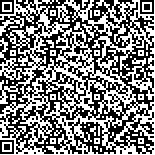下载中心
优秀审稿专家
优秀论文
相关链接
摘要

综合应用137Cs技术、RS技术和GIS技术,进行云南小江流域土壤侵蚀的评估和预测研究,探索中国西部山区观测资料缺乏、USLE(Universal Soil Loss Equation)方程不适宜区域土壤侵蚀评估与预测方法。通过137Cs技术,采用非农耕地与农耕地土壤侵蚀模型确定区内林地、灌丛、草地、坡耕地和裸地的年均侵蚀模数分别为356-1531 t/(km·a),330-1709 t/(km·a),886-3885 t/(km·a),5197-12454 t/(km·a)和15000 t/(km·a)以上。解译小江流域1987年(Landsat TM)、1995年(Landsat TM)和2005年(Landsat ETM)遥感影像,获得流域不同时期土地利用图,将其与1∶50000 DEM模型进行叠置分析,建立小江流域土地利用的空间分布图,结合利用137Cs确定的土壤侵蚀速率数据,进行土壤侵蚀分区与制图,分析土壤侵蚀的时空变化。结果表明:1987年-2005年流域轻度以上侵蚀面积占总面积的66.0%-67.3%,变化不大,但侵蚀强度明显加剧,1987年-1995年间尤为明显;中度侵蚀、强度侵蚀、极强度侵蚀区面积分别增加30%、23%和26%;小江流域1987年、1995年和2005年土壤侵蚀量分别为7.51×106 t/a,8.19×106 t/a和8.18×106 t/a。进而选用1995年和2005年的土壤侵蚀数据构建Markov-CA(马尔可夫-元胞自动机)预测模型,获得2015年流域土壤侵蚀分区图,并预测2015年土壤侵蚀量为8.17×106 t,与2005年侵蚀量接近。研究结果真实地反映了小江流域土壤侵蚀的变化过程与主要驱动因子,研究方法适合中国西部山区土壤侵蚀评估与预测。
It is difficult to evaluate and predict soil erosion and its related effects in mountainous areas without sufficient observation data. This study aimed to estimate and predict changes in soil erosion using 137Cs, RS, and GIS techniques and propose an approach for soil erosion evaluation in mountainous areas. Using the erosion modulus calculating models based on 137Cs concentration, the annual average soil erosion modulus of forest lands, shrub lands, grasslands, farmlands, and uncovered land were obtained. The values were 356-1531 t/(km·a), 330-1709 t/(km·a), 886-3885 t/(km·a), 5197-12454 t/(km·a), and more than 15000 t/(km·a), respectively. Then, erosion zoning was done by combining erosion rates and land use data by interpreting remote sense images from 1987 (Landsat TM), 1995 (Landsat TM), and 2005 (Landsat ETM), and these were overlaid with 1∶50000 DEM data. The results showed that the eroded land changed very little from 1987 to 2005, accounting for about 66%-67.3% of the total; however, the erosion intensity significantly rose from 1987 to 1995, up to 30% for some land use types. The eroded land, with the erosion modulus of 2500-5000 t/(km·a), 5000-8000 t/(km·a), and 8000-15000 t/(km·a) rise 30%, 23%, and 26%, respectively. The soil erosion amount in the Xiaojiang River basin was 7.51×106 t/a, 8.19×106 t/a, and 8.18×106 t/a in 1987, 1995, and 2005, respectively. Moreover, the zoning and amount of soil erosion for 2015 was predicted using a Markov-Cellar Automata Model, which was established using the data from 1995 and 2005. The predicted result, 8.17×106 t/a, was very similar to that from 2005. This study provides a valuable solution to evaluate and predict soil erosion for mountainous areas in southwest China.

